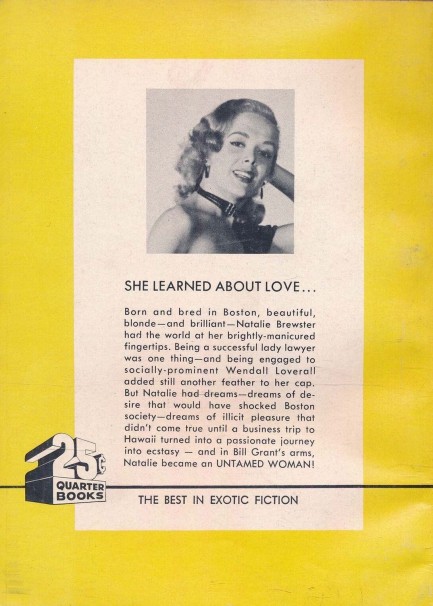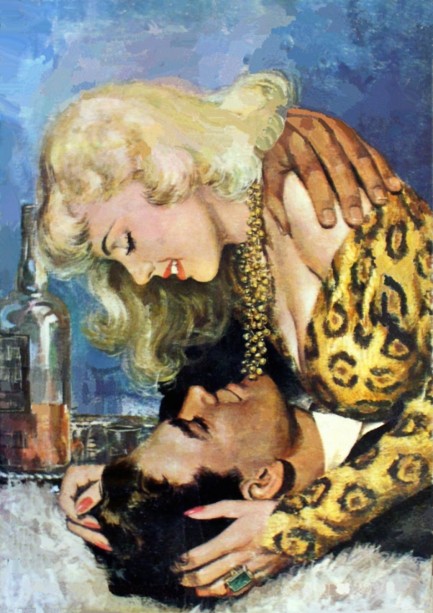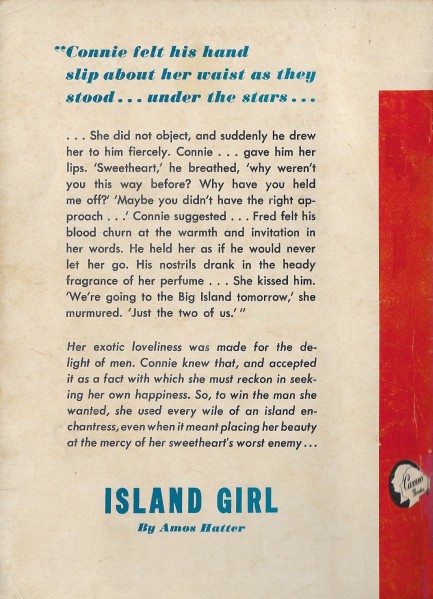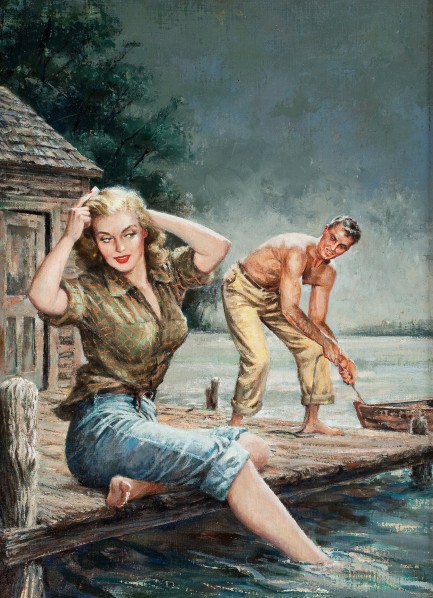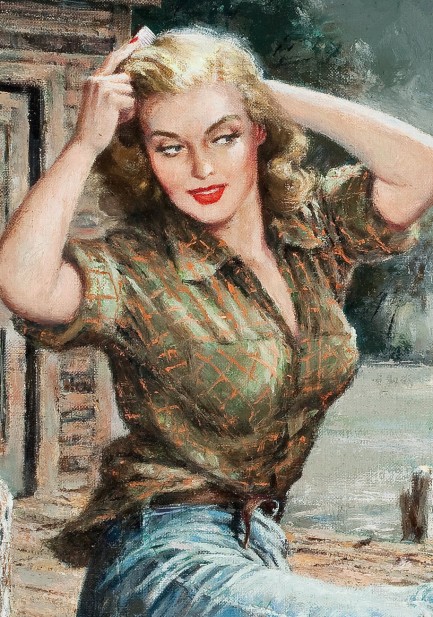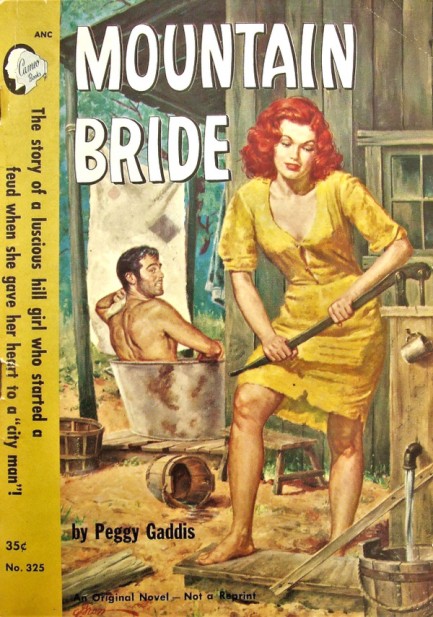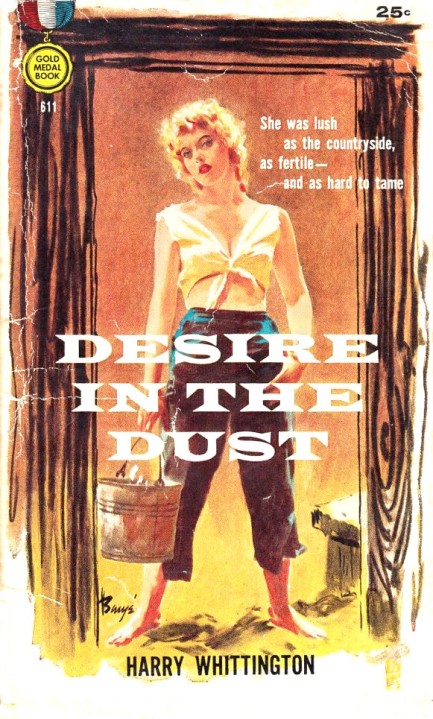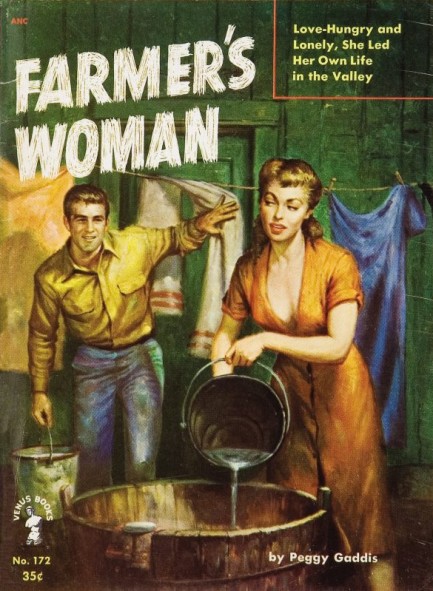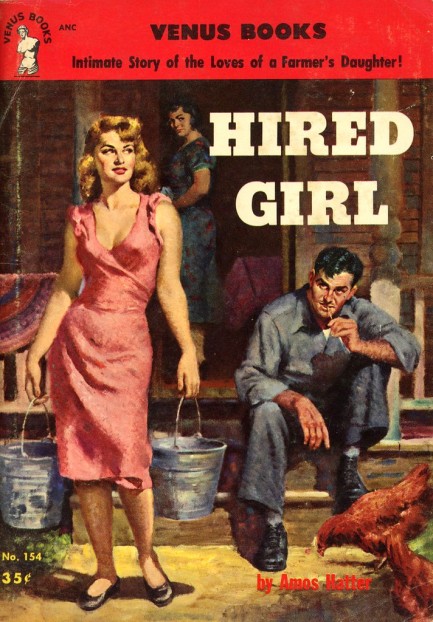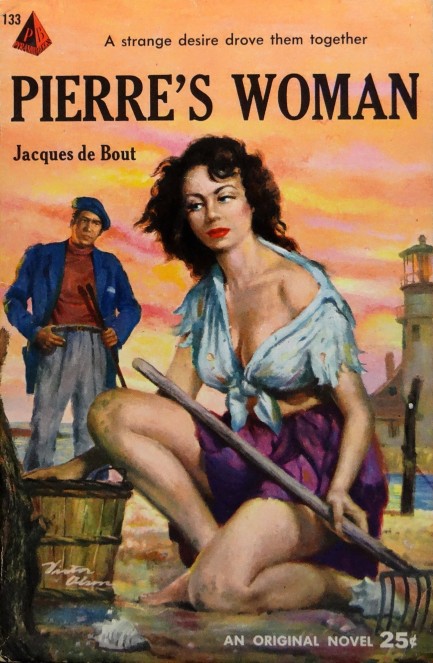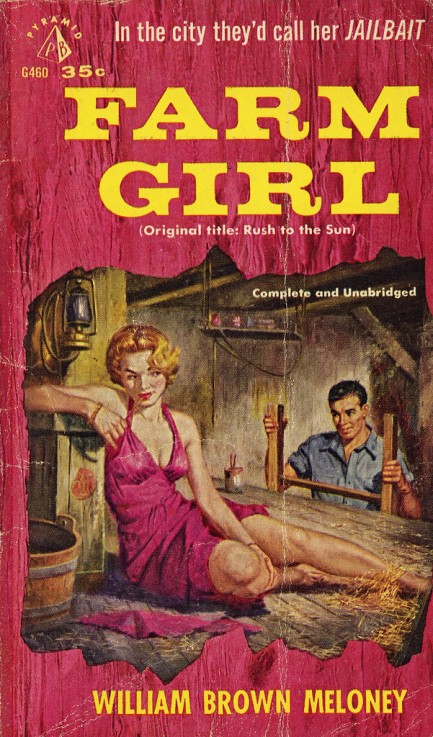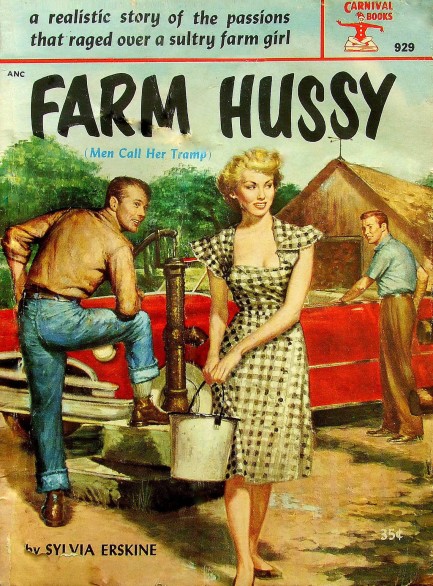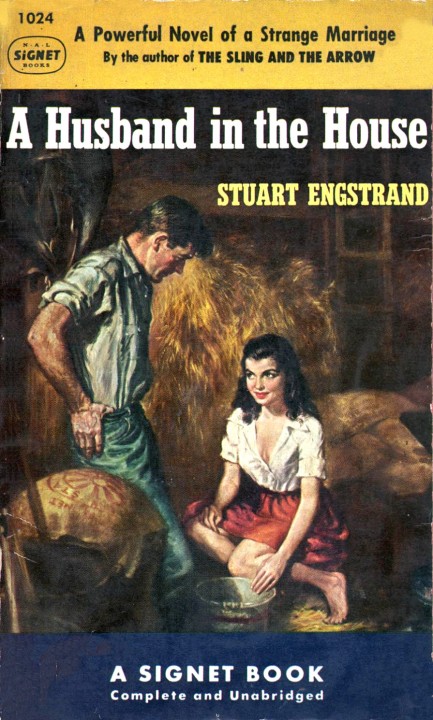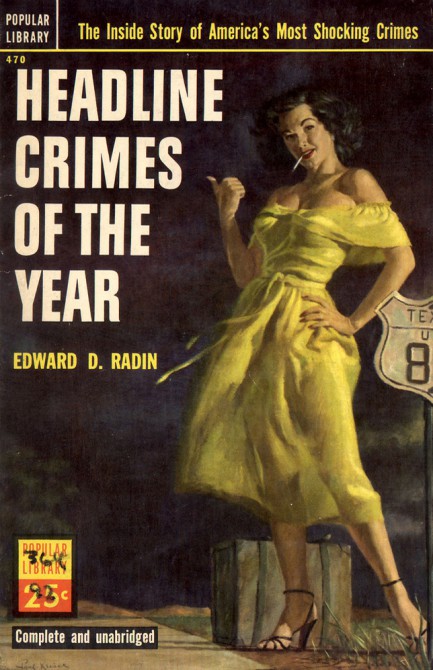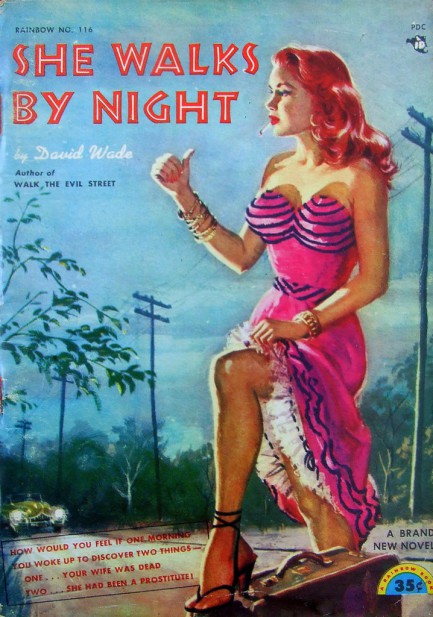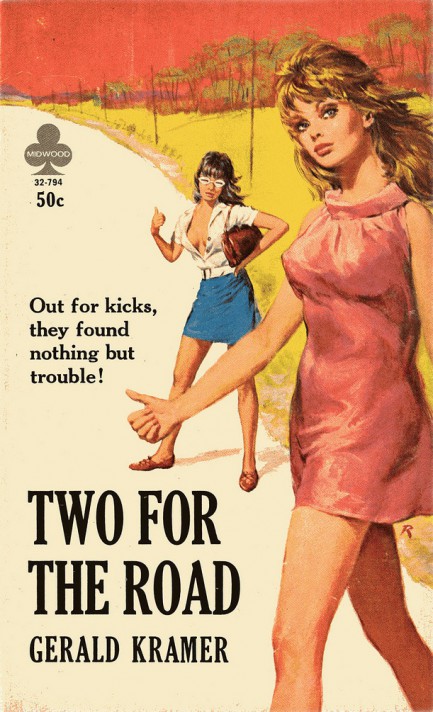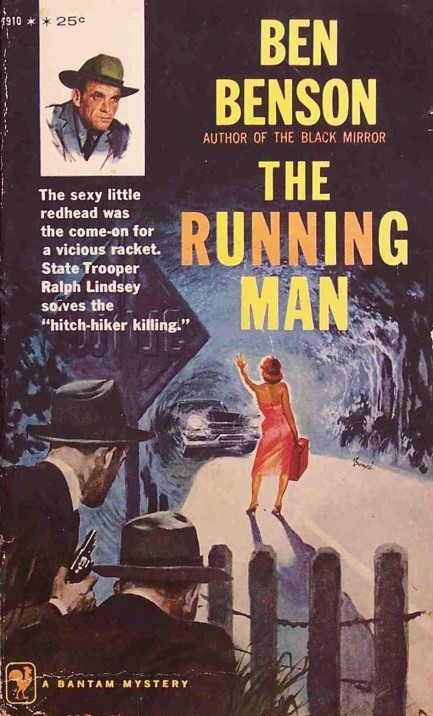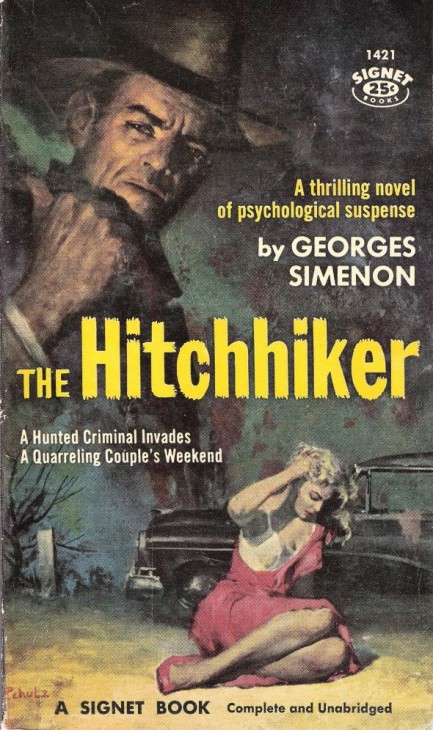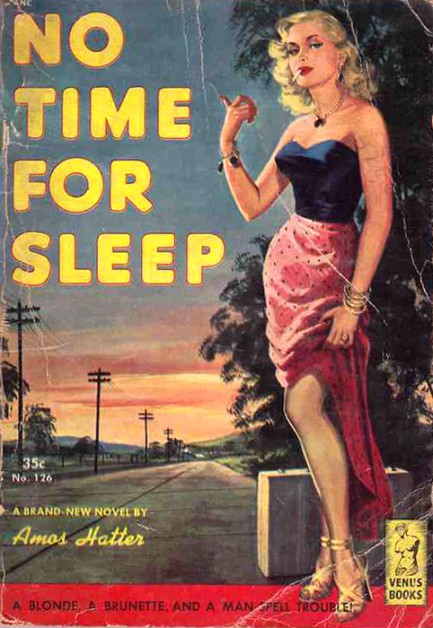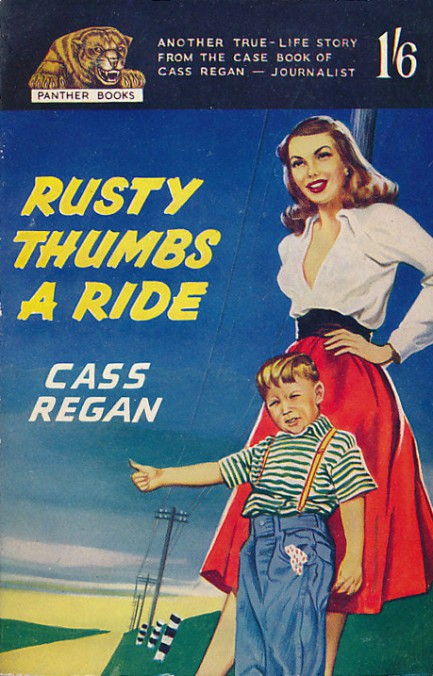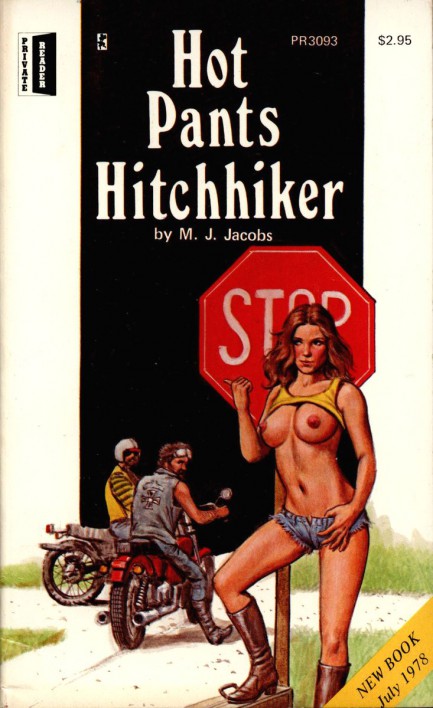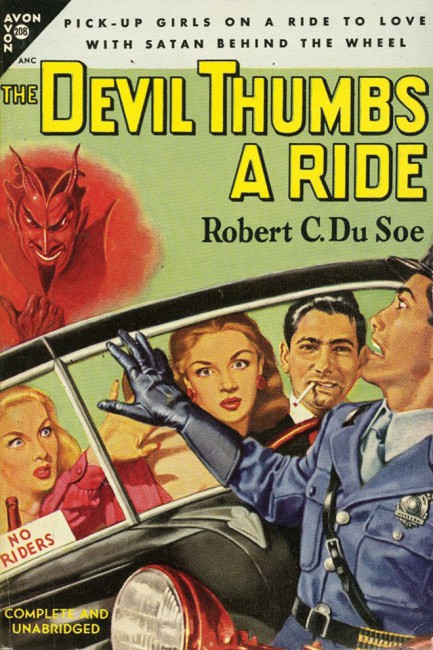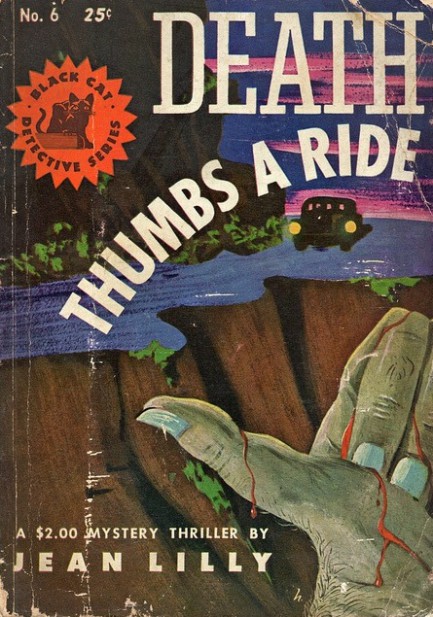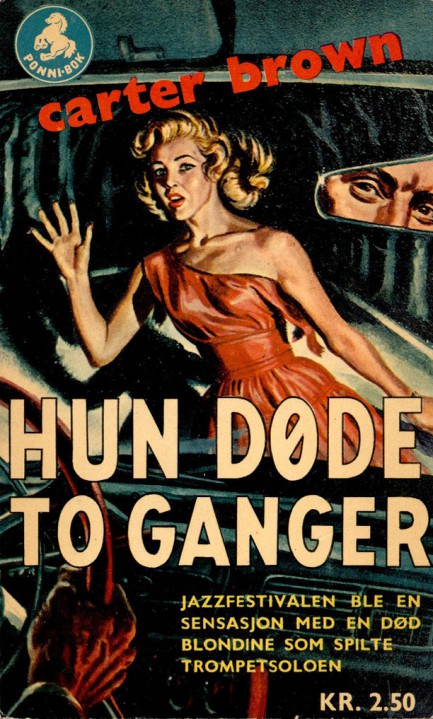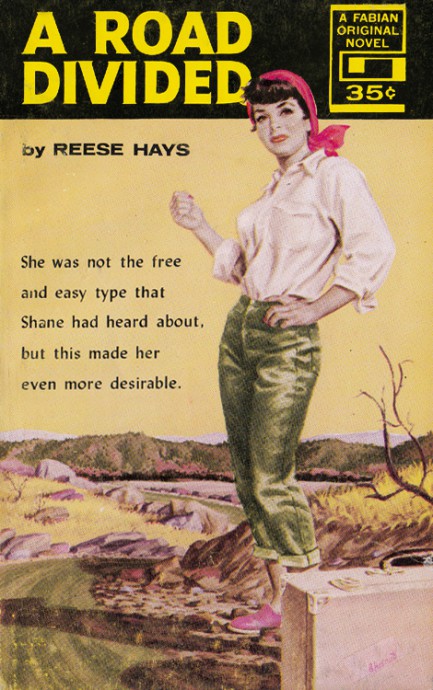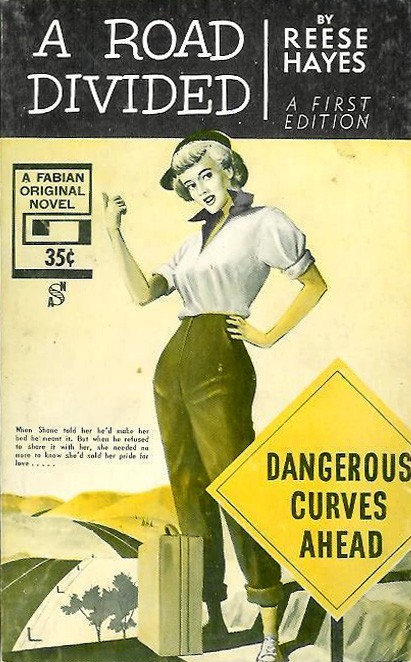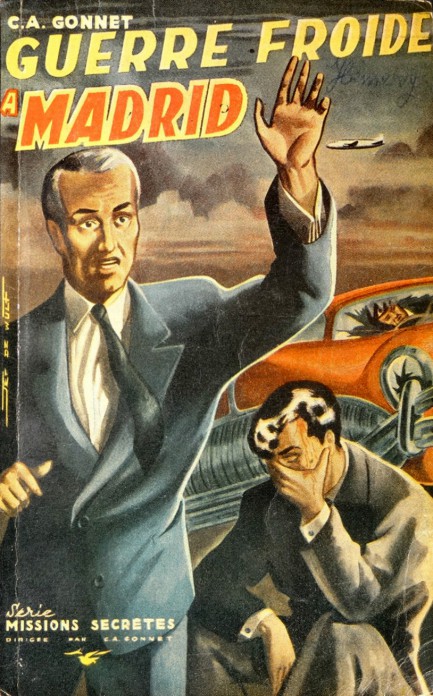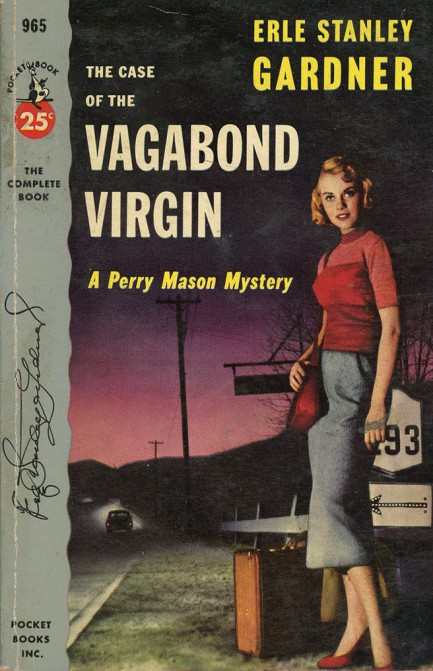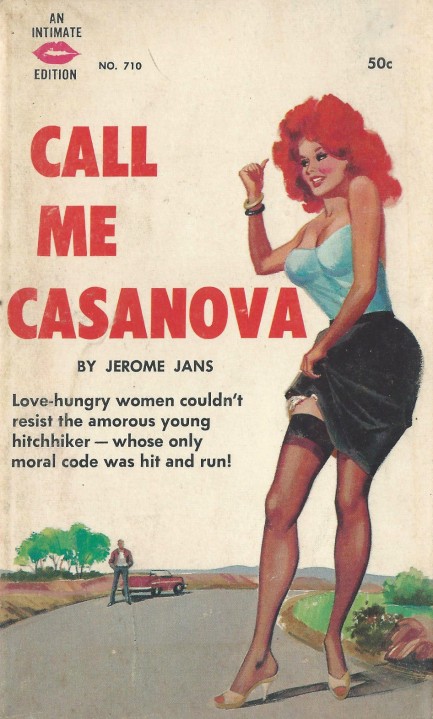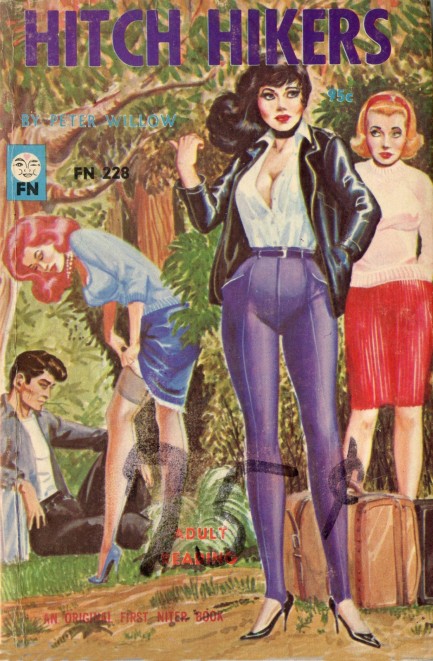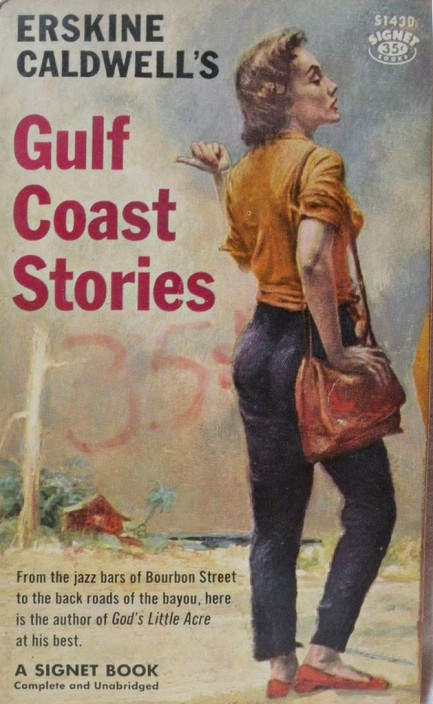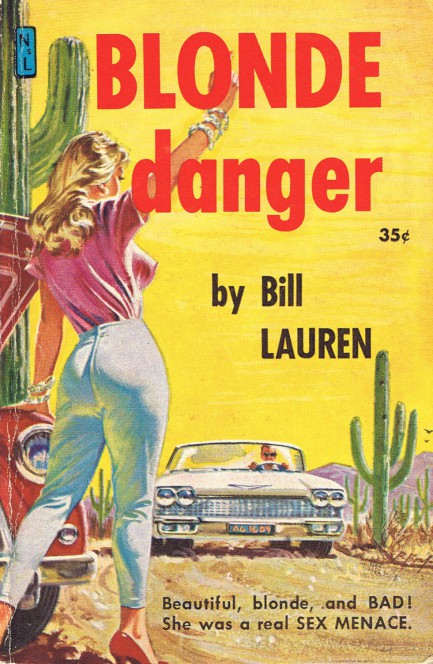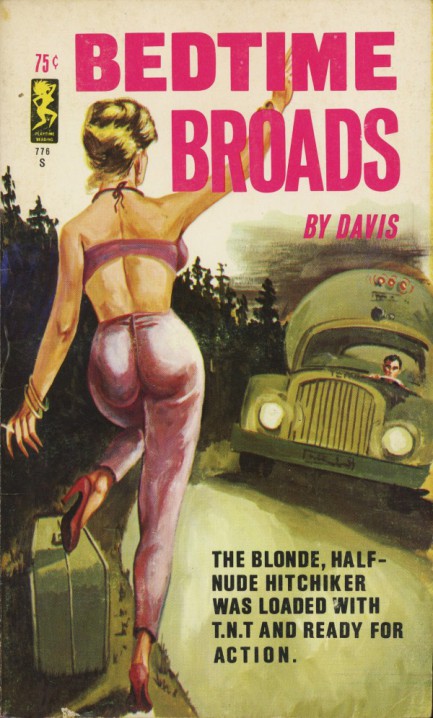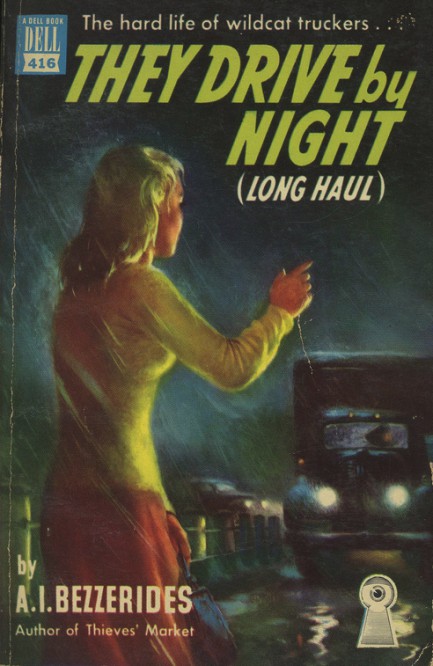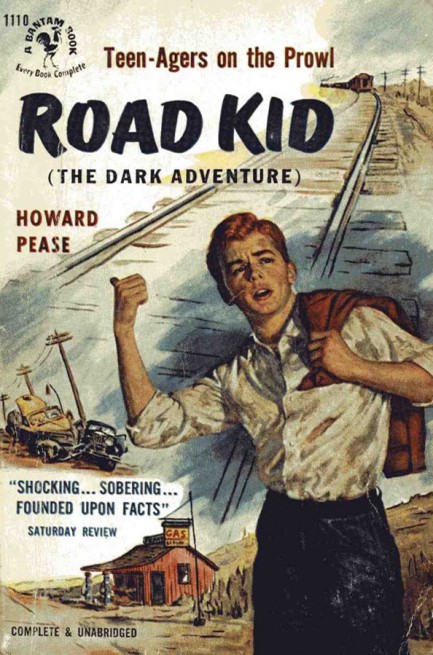 You say I'm beautiful now. But when you find out I have an unabsorbed twin attached to my abdomen you'll change your tune just like every man. 
Yup, it's Amos Hatter again. He makes yet another appearance here, this time with his 1952 carny novel Girl of the Midway. This was a natural: we love carny novels, and Hatter specializes in sleazy quasi-romances, which we also like. In this one a naive young woman named Margy Brophy, who works for her father's merry-go-round concession at an amusement park called Dreamland, gets involved with a man named Bill Tanner who plans to bring a big stage show onto the premises. The carnies fear the show will put some of their concessions out of business, so Margy's affair is an uncomfortable case of consorting with the enemy. However, Tanner has no intention of stealing customers. He tries but can't convince the carnies that, given time, his show will actually increase the patronage at their concessions. The battle lines harden, then the most recalcitrant of the carnies is murdered.
The homicide aspect of the book isn't much of a mystery. You merely have to look past the obvious red herring and choose the next most unpleasant carnival denizen, which you'll do automatically. But Hatter isn't a mystery writer anyway. His jam is sexual titillation, and though he does that reasonably well here, at this point we have to accept that he'll probably never again approach the heights of his Hawaii-based novel Island Girl. Of course, in general, you're not looking for nail-biting thrills, deep insight, or remarkable literary style with these types of books. They're meant to give you a semi-boner or three. There are no boners, semi or otherwise, caused by Girl of the Midway. But there's a good amount of carnival atmosphere, and that was enough for us to enjoy the book. Even so, we can't recommend it. We do, however, recommend that you appreciate the cover art by Rudy Nappi. It's perfection.
 This is right about when every dog person I've ever known starts to rethink their preferences. 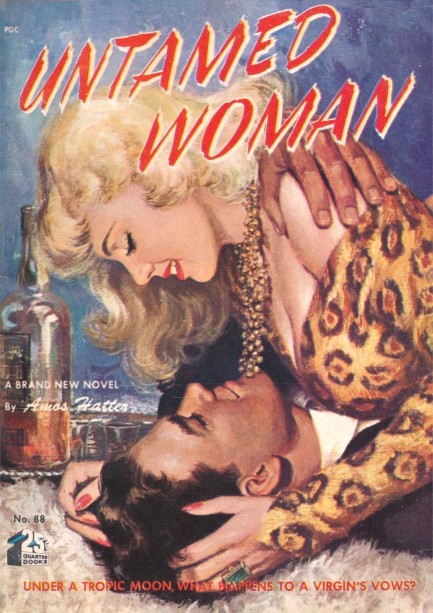
Amos Hatter entertained us very effectively with his 1952 Hawaiian romance Island Girl, and since we knew his 1951 novel Untamed Woman was set in the islands too, we grabbed it. Hatter, aka James W. Lampp, Ben West, et al, tells the story of laced up lawyer Natalie Brewster, who jets from Boston to paradise to get a contract signed by her firm's client Bill Grant. When her briefcase disappears at his bacchanalian luau she assumes he stole it to keep her from leaving so he can make advances toward her. After a time she isn't so sure he lifted it after all, but the missing briefcase does keep her there, and she gives in to Bill's overtures, and gets caught up in all of Hawaii's other distractions too.
Hatter is comfortable working within the setting, and punctuates his story with nice local color, as well as quirky humor. Our favorite sequence was a living room destroying fight between Natalie and her fierce rival Dorothy. Amazingly, of all the books we've read, that was the first knock-down drag-out—apart from the Modesty Blaise novels—that we've come across between two women. Hatter writes it well. The hatred is pure enough to set off Mauna Loa. The next day both Natalie and Dorothy are wrecked, which is what happens when you smash coffee tables and hurl vases at each other. The end of the book is a little rushed, and a little dumb, but if you want lightweight, male-oriented, 1950's sex adventure, Untamed Woman will get the job done. The cover on this, by the way, featuring a femme fatale in a leopard outfit, is uncredited.
 All's affair in love and show business. 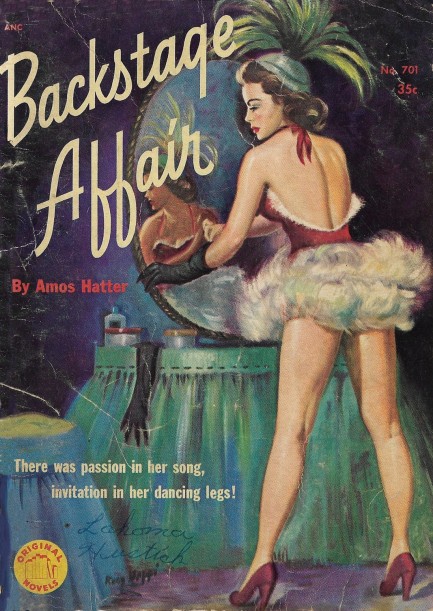
First matter—we met a couple of nice women at the gintoneria in one of our local plazas last night and said we'd mention them today as a way of proving that we were telling the truth about being the makers of this website. So hello, friends, and sorry about all the nudity you'll find here. Hah—well, not really. Anyway, last year we read Amos Hatter's (James W. Lampp's) unusual 1952 titillation novel Island Girl, and since we're repeat offenders when it comes to authors who intrigue us, we picked up another Hatter—1951's Backstage Affair. It's about a dancer and singer named Mitzi West who's trying earn her first big show business break, but is stuck in St. Louis finding it exceedingly difficult not to become a prostitute to support herself. By now you know the formula with these tales, so we don't need to explain the plot in more detail. It isn't as good as Island Girl, but it's enjoyable enough, and it came with Rudy Nappi cover art—signed by both him and a former owner of the book named Lahoma Hustich. Love your name, Lahoma.
 Well, I don't care who told you the pond is safe. I'm telling you it's toxic and you better climb out right now. 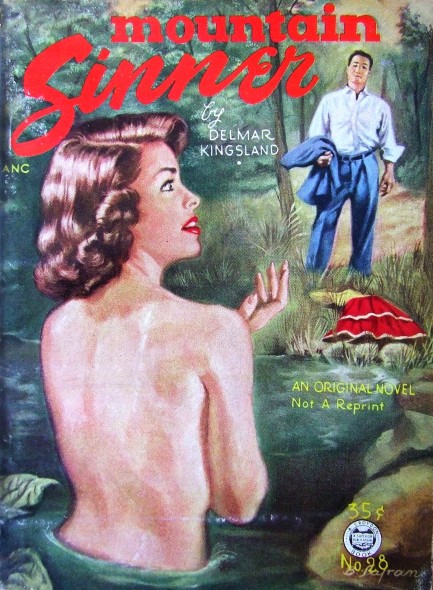
Above: a nice cover by Bernard Safran for the Croydon Books sleazer Mountain Sinner, written by Delmar Kingsland and published in 1953. We borrowed this from Sleazy Digest Books, a fun blogspot that has fueled some of our favorite purchases. Kingsland was actually James W. Lampp, who was also Amos Hatter, Ben West, Frederic Spencer, Homer Hatten, Anne Farrington, and William Vaneer, so add another pseudonym to his ledger—possibly his best. Even Lampp was a fake name. His real name, according to his 1994 obituary, was Lumpp. No wonder he hoarded pen names. We've featured him a lot, and the best way see those entries is to click here and scroll. Also, women surprised while skinny dipping is yet another common motif in mid-century paperback art. See more examples here, here, and here.
 In Hatter's novel Hawaii is blue in more ways than one. 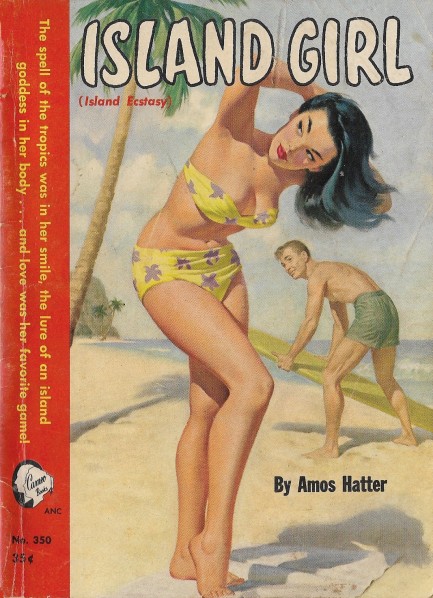
Amos Hatter, aka Ben West, aka James Lampp, originally published Island Girl as Island Ecstasy in 1952. Most copies of Island Girl are from a couple of years later, but somehow ours is also from 1952. The art, which is identical for both titles, is uncredited but very nice. The novel is about a Hawaiian beauty named Consuela Marlin, Connie for short, who takes a liking to a WASPish researcher named Jay Carter, and determines to win him over by any means necessary. Surprisingly for a 1952 novel, that leads to Connie bedding him—repeatedly.
Jay's a haole in Hawaiian lingo, a non-islander, which makes the romance a culture clash. It's also a clash of substance—Connie's relatable in every way, while Jay's goodhearted, but infuriatingly laissez-faire in his romantic attitudes. A complication soon arises in the form of a one percenter who lands on Oahu and decides he wants and is entitled to Connie. Forced kisses, stalkerish schemes, gaslighting, and browbeating are his tools, but this being a mid-century book, Hatter doesn't write him as a particularly bad guy, so much as a determined rival. What are the results of this shitty behavior? He gets what he wants—repeatedly.
These vintage sex dramas are strange as hell sometimes, but you know that going in, so you roll with it. Hatter's depiction of Consuela as independent yet submissive is dubious, but is in no way a surprise in a genre built around the supposed easy availability of women. We're just glad we didn't live during the era when men who were violent toward women were considered to be “a little forward” or “within their rights.” All that said, Island Girl is well written and worth a read, if for no other reason than the generational and sociological differences of the era it highlights.
 All you guys down here on the waterfront reek of fish. But that's okay. I used to live by the industrial pig farm, and the men there... pee yew! 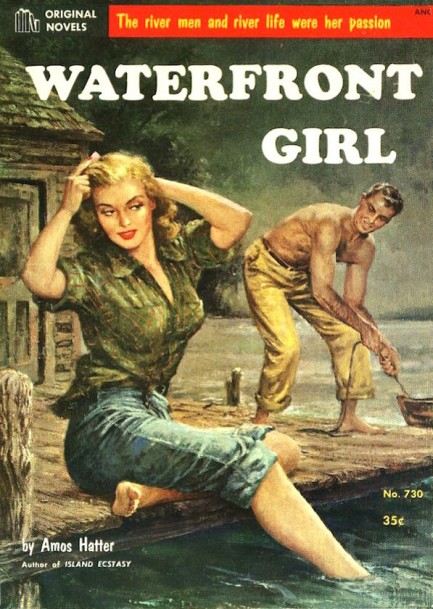
Didn't we just feature a cover for Waterfront Girl last month? Nope. That was Waterfront Blonde. Totally different book. Similar themes, though. We wouldn't go so far as to call books about untamable waterfront girls a sub-genre of mid-century fiction, but more than a few tales of that type hit newsstands during the 1950s. This one came from Amos Hatter, aka James W. Lampp, and tells the story of, well, an untamable waterfront girl on the mighty Mississippi. It's from Original Novels, was published in 1952, and the cover is unattributed. You see the original art below, with a close-up showing the detailed work. The artist really deserves recognition for this effort, but no such luck. Sign your art, everyone. Don't be like this person.
 All these books are on our bucket list.
When you look at paperback covers every day it's interesting the common elements you notice. Of late, we've noticed buckets. They pop up on backwoods and rural sleaze novels, usually in amusing fashion, often in the possession of hardworking women going about difficult chores while nearby men don't do dick. We'll just tell you—that's not the way it works around our place.
|
 |

The headlines that mattered yesteryear.
1961—Bay of Pigs Invasion Is Launched
A group of CIA financed and trained Cuban refugees lands at the Bay of Pigs in southern Cuba with the aim of ousting Fidel Castro. However, the invasion fails badly and the result is embarrassment for U.S. president John F. Kennedy and a major boost in popularity for Fidel Castro, and also has the effect of pushing him toward the Soviet Union for protection. 1943—First LSD Trip Takes Place
Swiss scientist Albert Hofmann, while working at Sandoz Laboratories in Basel, accidentally absorbs lysergic acid diethylamide, better known as LSD, and thus discovers its psychedelic properties. He had first synthesized the substance five years earlier but hadn't been aware of its effects. He goes on to write scores of articles and books about his creation. 1912—The Titanic Sinks
Two and a half hours after striking an iceberg in the North Atlantic Ocean on its maiden voyage, the British passenger liner RMS Titanic sinks, dragging 1,517 people to their deaths. The number of dead amount to more than fifty percent of the passengers, due mainly to the fact the liner was not equipped with enough lifeboats. 1947—Robinson Breaks Color Line
African-American baseball player Jackie Robinson officially breaks Major League Baseball's color line when he debuts for the Brooklyn Dodgers. Several dark skinned men had played professional baseball around the beginning of the twentieth century, but Robinson was the first to overcome the official segregation policy called—ironically, in retrospect—the "gentleman's agreement".
|

|
|

It's easy. We have an uploader that makes it a snap. Use it to submit your art, text, header, and subhead. Your post can be funny, serious, or anything in between, as long as it's vintage pulp. You'll get a byline and experience the fleeting pride of free authorship. We'll edit your post for typos, but the rest is up to you. Click here to give us your best shot.

|
|




